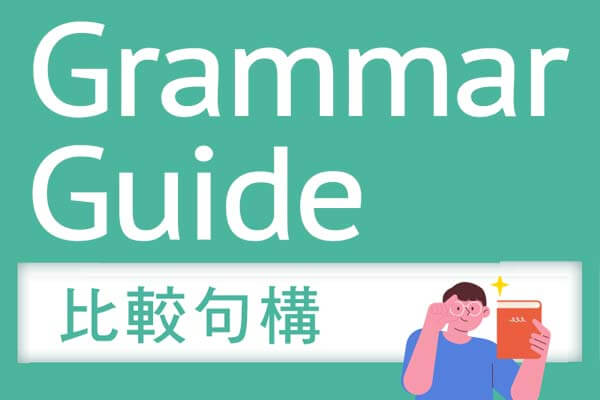解析 文法【比較句構】
#文法

>> 解析文法【時態- 4】
解析文法
◎ 一般比較句構
1. 一般比較句構的句型:
比較級形容詞 / 副詞 + than... 比⋯⋯更加⋯⋯
less + 原級形容詞 / 副詞 + than... 比⋯⋯更不⋯⋯
He is more / less careful than John.(他比約翰還/更不謹慎。)
2. 比較級形容詞和副詞的變化規則:
單音節的形容詞和副詞幾乎都採字尾變化,甚少用 more 修飾;兩音節的形容詞和副詞採不規則變化 (改變字尾,或用 more 修飾並保留原級);而三音節以上的形容詞和副詞幾乎皆用 more 修飾,並保留原 級。採字尾變化的形容詞和副詞不得再以 more 修飾,否則會造成雙重比較;而被 less 修飾的形容詞和副 詞,不論音節,均使用原級。
Henry runs faster than Peter.(亨利跑得比彼得還快。)
He visits us less often than John.(他沒有約翰那麼常來看我們。)
3. than 引導的副詞子句句構需與主要子句句構一致,若兩句的時態一致,可將該副詞子句中的 be 動詞、助動詞或 do / does / did 予以省略,僅保留主詞。
He is less responsible than you (are).(他比你還不負責任。)
4. 比較對象不是不同人或物、而是與自己做比較時,需注意時態;再者,若主要子句與 than 引導的副 詞子句中皆有對等的介詞片語、或 than 子句中有 when 引導的副詞子句修飾時,than 之後的主詞 及動詞或助動詞部分可予以省略。
Jim is happier with Mary than (he is) with Jane.(吉姆跟瑪麗在一起要比跟阿珍在一起來得快樂。)
He is much thinner than (he was) when I saw him two months ago.(他比我兩個月前看見他時瘦多了。)
5.「主詞 + 介詞片語」或「所有格 + 主詞」極易形成錯誤對象的比較,而為避免重複,比較對象為單數 時用 that,複數則用 those。
Students in this school study harder than that school. (╳)
→ Students in this school study harder than those in that school. (○) 本校的學生要比那所學校的學生來得用功。
6.「比較級形容詞 / 副詞 + than...」句構中,若比較的對象為兩個形容詞,則用 more 修飾第一個形容 詞,且兩個形容詞一律使用原級。
He is more good than bad.(他好的一面多過壞的一面。)
7. 注意同範圍及不同範圍的比較。
He is taller than any other student / all the other students / anyone else in his class.
他比他班上任何一位學生都來得高。(同範圍,需排除自己)
He is taller than any student / all the students / anyone in Mary’s class.
他比瑪麗班上任何人都來得高。(不同範圍)
8. 若干 -ior 結尾的形容詞本身已具有比較級的意味,需與介詞 to 並用,而不可用於 more... than... 或 less... than... 的句構中。此類形容詞列舉如下:
be superior to...(比⋯⋯優越)、be inferior to...(比⋯⋯差勁)、be senior to...(比⋯⋯年長/地位 高)、be junior to...(比⋯⋯年輕/地位低)。
When it comes to singing, John is superior to most of his classmates.
說到唱歌,約翰唱得比他大多數同學都來得好。
>> 解析文法【時態- 3】
延伸閱讀
關鍵字: #文法
本篇內容出自《常春藤解析/生活英語雜誌》,
2025/08/16 00:00 前買享優惠
Ivy Engrest 訂戶在訂閱期間訂閱紙本(無贈品版本)再享最低 62折優惠!)>>
【雜誌訂閱】37週年慶 THANK YOU 一起走下去



